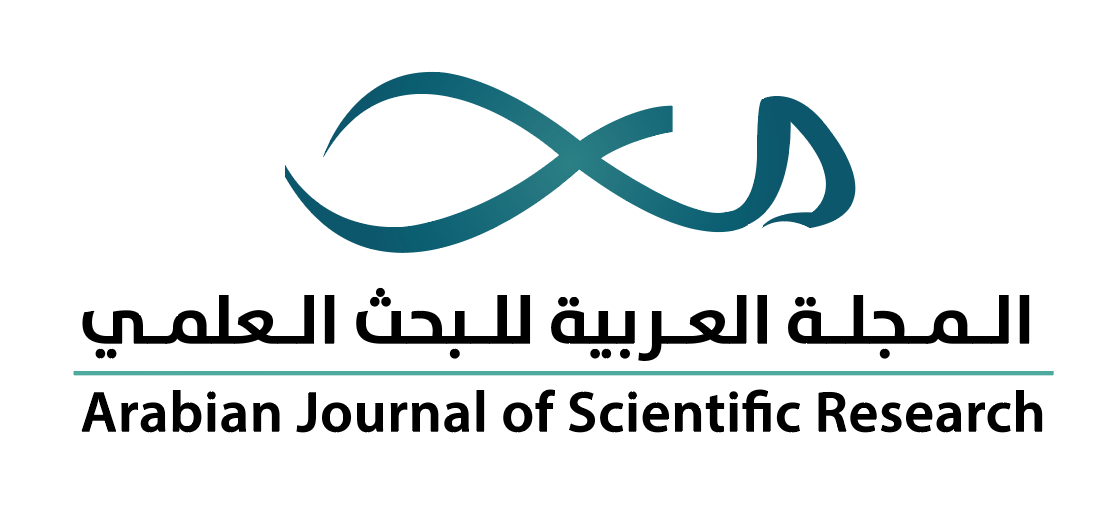-
oa تأثير إضافة بعض المضافات الغذائية إلى وسط زراعة فطر ملك المحاري (Pleurotus eryngii) في إنتاجيته ونوعيته
- Source: Arabian Journal of Scientific Research-المجلة العربية للبحث العلمي, Volume 3 (2022), Issue 2, Oct 2022, 12
-
- 20 March 2022
- 17 July 2022
- 31 October 2022
- Previous Article
- Table of Contents
- Next Article
Abstract
الملخص
نُفذت هذه الدراسة بهدف تقييم كفاءة إضافة بعض المضافات الغذائية (فول الصويا، وحبوب القمح، ونخالة القمح) إلى وسط الزراعة (نشارة الخشب) في الصفات الإنتاجية والنوعية لفطر ملك المحاري (Pleurotus eryngii). وقد أُضيفت المضافات السابقة بثلاثة تراكيز: 10 و20 و30% إلى وسط الزراعة. ودُرست الإنتاجية والكفاءة الحيوية لكل معاملة وتأثيرها في التركيب الكيميائي للأجسام الثمرية. أظهرت النتائج تفوّق معظم معاملات المضافات الغذائية بمختلف التراكيز على الشاهد، حيث أعطت معاملة الوسط المضاف إليه فول الصويا بتركيز 20% أعلى إنتاجية (286.0 غ/ كغ وسط رطب) وأعلى كفاءة حيوية (114.40%) وأعلى نسبة رماد (8.037%). وتفوقت الأجسام الثمرية النامية على الأوساط المضاف إليها فول الصويا بتركيز 30% من حيث نسبة البروتين (26.56%)، كما تفوقت الأجسام النامية على الأوساط المضاف إليها حبوب القمح بتركيز 30% من حيث نسبة المادة الجافة (21.60%). أما بالنسبة إلى الكربوهيدرات والألياف، فقد تفوقت الأجسام النامية على الأوساط المضاف إليها نخالة القمح بتركيز 20% (67.74%، 6.750%، على التوالي). وخلصت الدراسة إلى أن إضافة المغذيات إلى وسط زراعة فطر ملك المحاري زادت الإنتاجية والكفاءة الحيوية، وحسنت من الصفات النوعية للأجسام الثمرية.
This study was conducted to assess the efficiency of adding some supplements (soybeans, wheat grains, and wheat bran) to the cultivation medium (sawdust) in improving the productive and qualitative characteristics of Pleurotus eryngii (king mushrooms). Three concentrations 10, 20, 30% of each supplement were added to the cultivation medium. The productivity and biological efficiency of each treatment and its impact on chemical composition of the fruit bodies were studied. The results showed that most treatments with the various concentrations of additives were superior to the control treatment. Medium supplemented with 20% soybean gave the highest productivity (286.0 g/kg wet medium), the highest biological efficiency (114.40%) and the highest ash content (8.037%). Whereas, fruit bodies grown on media supplemented with soybeans at a concentration of 30% outperformed other treatments in protein content (26.56%). Fruit bodies grown in media containing 30% wheat grain were superior in their dry matter content (21.60%). Carbohydrates and fiber contents were the highest in fruit bodies grown in media supplemented with 20% wheat bran (67.74% and 6.750%, respectively). In conclusion, the addition of nutritional supplements to the cultivation medium of oyster king mushrooms increased productivity and biological efficiency, and also improved the qualitative qualities of fruit bodies.


